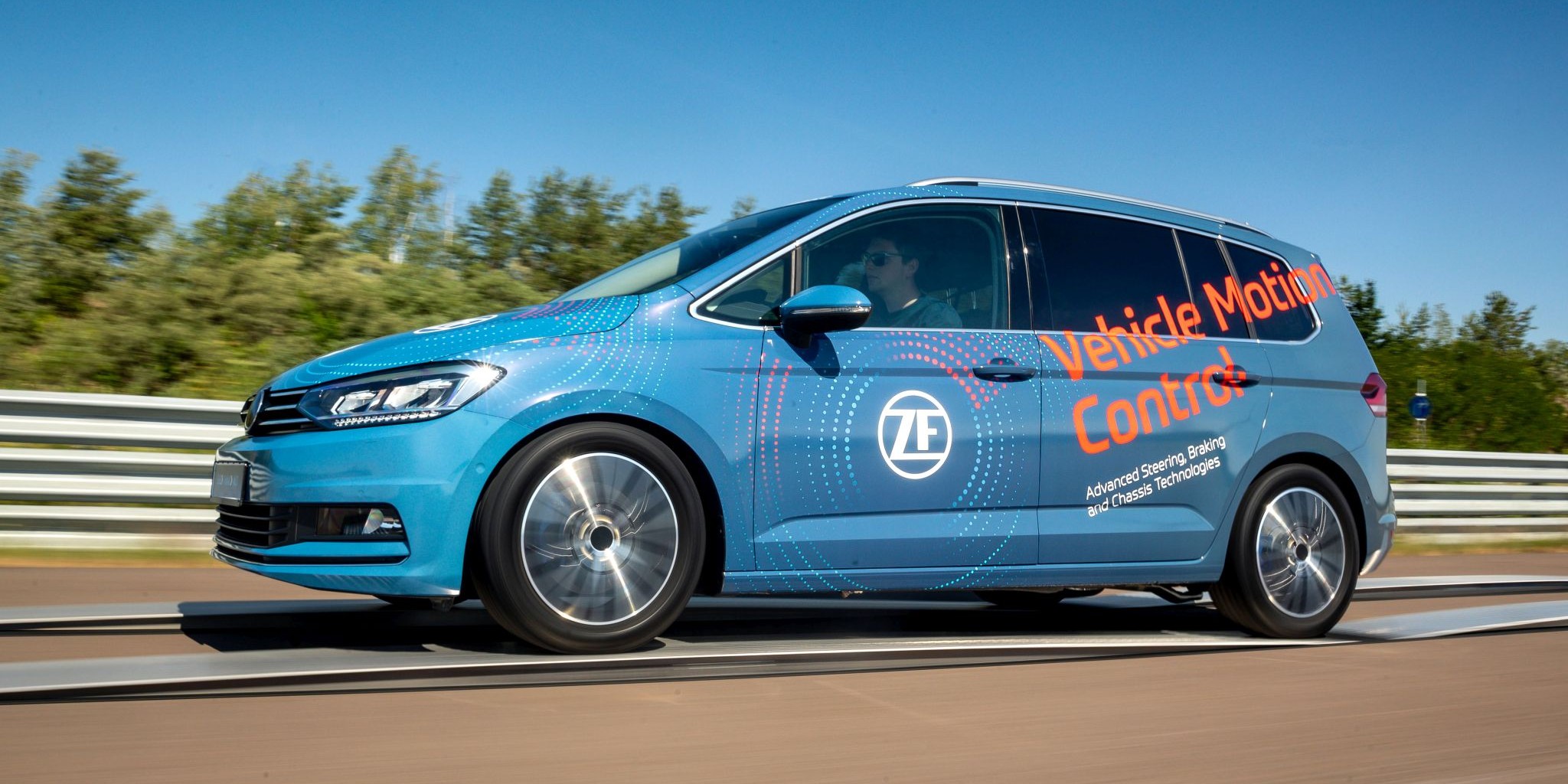This decision will not just come down to safety issues and costs, but mainly how comfortable passengers feel when they are being transported and whether they can use the newly acquired free time usefully. This will depend greatly on the travel comfort, the vehicle handling, and therefore the chassis. It is usually passengers that are not actively driving a vehicle themselves that are more sensitive to changes in travel comfort.

Technology
#ZFexperts
The Chassis – the Key to Autonomous Driving
Min Reading Time
Main objective: negating the effects of driving dynamics on the car body
Passengers wanting to concentrate on work, a book, or a movie would be unable to do so because of the distractions caused by the way in which the car body moves when traveling over potholes, over road bumps, and around tight corners. This particularly affects those people who suffer from travel sickness – also known as motion sickness or kinetosis. With our Flying Carpet 2.0 chassis concept that we recently presented to international media representatives, we are already creating the basis for the self-driving vehicles of the future to actually be able to be used as mobile living rooms or offices. The concept is a combination of active damping, braking, and steering systems. It includes a network of cutting-edge sensor systems, smart transmission control, and intelligent actuator engineering, and is able to maintain full control over all of the longitudinal, transverse, and vertical movements made by the vehicle. Using this concept, we can ensure that occupants are almost completely unaffected by any disruptive vehicle movements. At the heart of this system is the sMOTION fully active damping system that uses four actuators to adapt the suspension movements of each individual wheel to reflect every driving situation and all road surface features. The system is also equipped with our AKC active rear axle steering, steer-by-wire power steering, and the IBC active brake system. The cubiX steering system is the central switchboard for this concept, and controls and links the active and semi-active actuators with one another from a central location. The optimal networking has allowed for new functions to be created, with which we can improve vehicle comfort, dynamics, and safety. We are creating a car that is perfectly equipped for autonomous city driving in the future.
Data facilitates extensive functional development
Digitalization is a major driver in chassis development and functional application for fully automated and autonomous driving. I think it is particularly important in the development of sensor technology and networking. Digitalization will, for example, enable every car in the world to be used as a sensor for recording driving and street data. We could then use the recorded data for predictive functions. Were there to be data about the condition of upcoming sections of road, such as if there are road bumps or potholes, this can be used to develop steering strategies for our sMOTION fully active damping system before reaching these road conditions.
The challenges being posed by autonomous driving to us chassis developers are huge. This also holds true for the scope of data and thus the opportunities to develop control functions. I am personally delighted to be part of and help shape this era.
“Passengers wanting to concentrate on work, a book, or a movie would be unable to do so because of the distractions caused by the way in which the car body moves when traveling over potholes, over road bumps, and around tight corners.”






